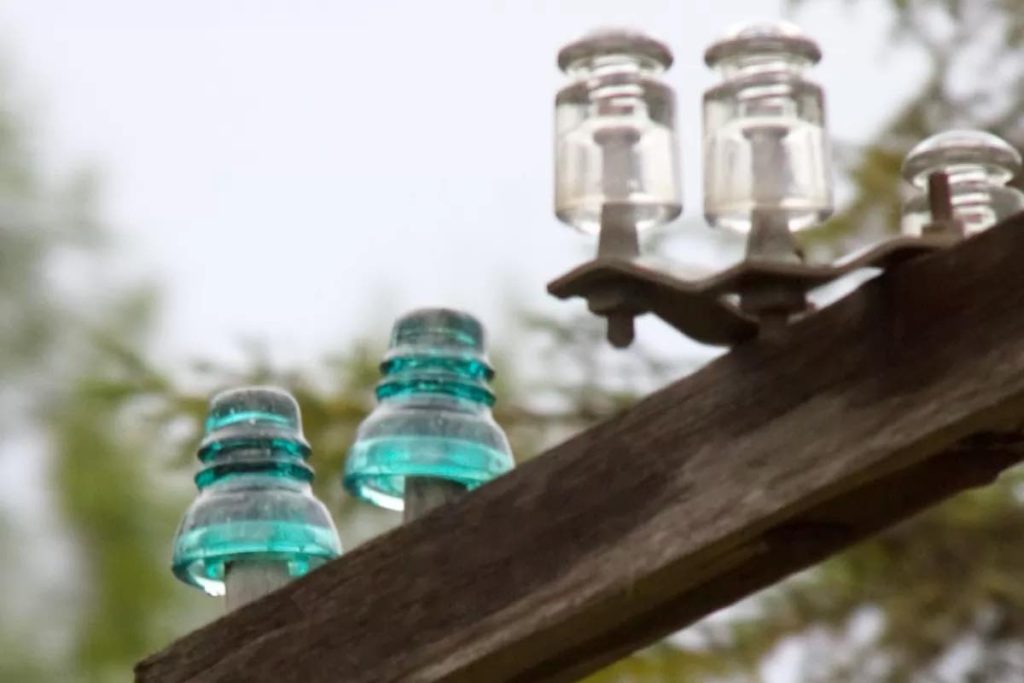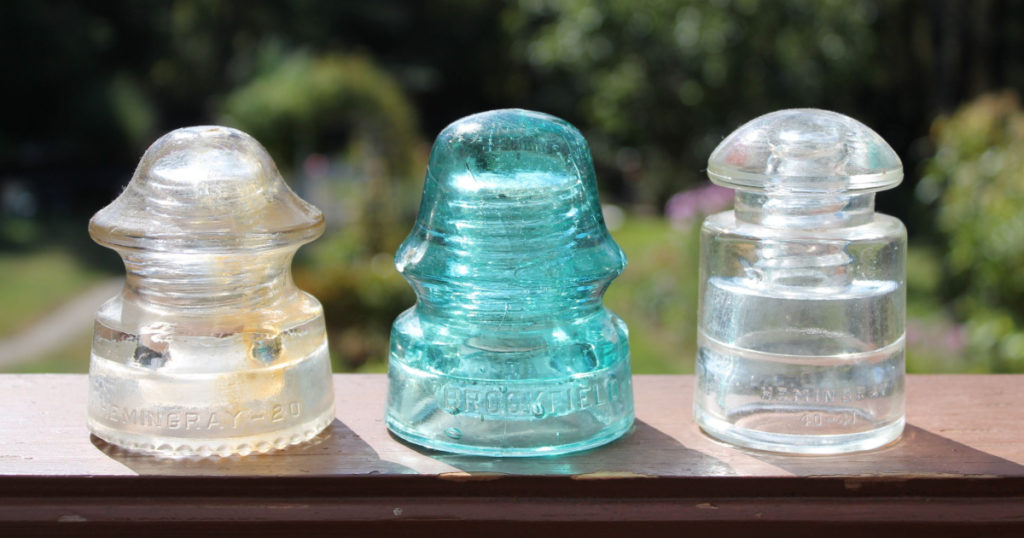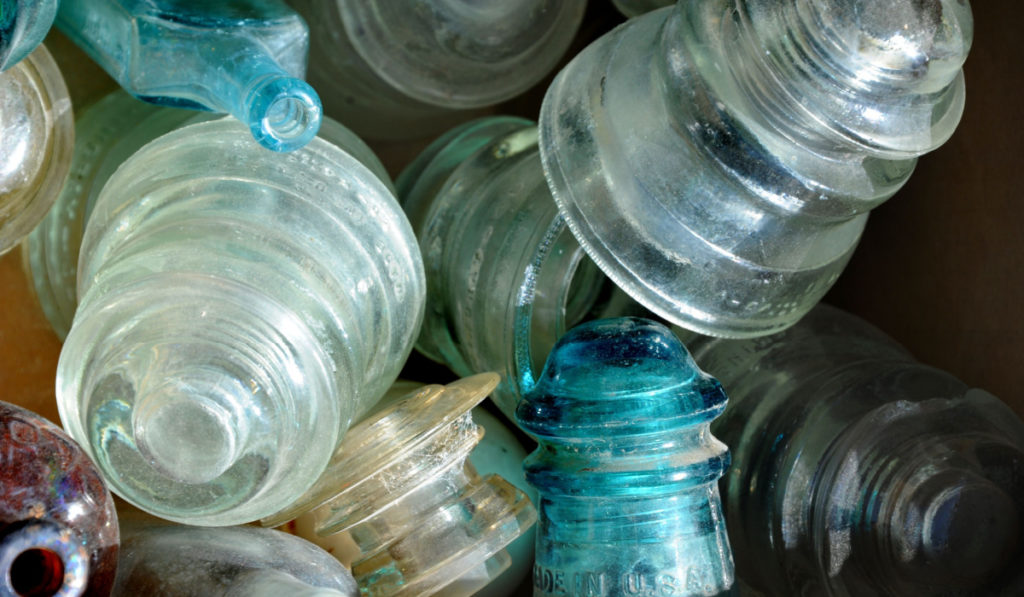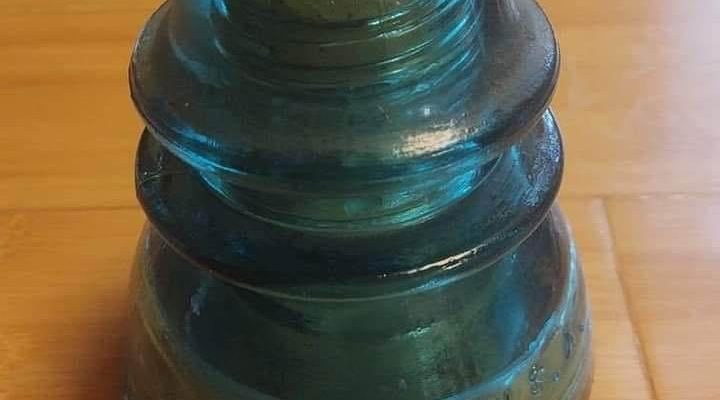
Most people have seen the things that rest on top of telephone poles in a straight line, often resembling bulbs, bowls, or fancy-looking vases. They actually have a name and are a beautiful, if not lucrative (in some cases), piece of history. While most antique telephone glass insulators are worth around $20 or less, some rarer pieces have actually sold for thousands. Additionally, few people likely know what purpose these colorful pieces of glass actually served.
A Roundabout History

To understand how these antique telephone glass insulators work, it may be helpful to understand a bit about the connection between electricity, telephones, and the original purpose of the history of how they came about.
Contrary to popular belief, electricity was actually a concept for centuries before the emergence of antique telephone glass insulators. The first recorded ideas of electricity were in 600 BC in ancient Greece, stumbling upon static electricity. This discovery paved the way for brilliant minds, eventually creating a path for the invention of electrical telegraphs. However, the telephone glass insulators were still thousands of years away.
Fascinatingly, the first insulators were actually intended to protect homes against lightning strikes. However, they were found to be helpful in another seemingly vital matter. As it turns out, antique telephone glass insulators made a hugely positive impact on the way people communicate.
The Importance of Glass Electrical Insulators
Fast forward to the 1800’s, and there were several technological advancements made that would ultimately prove a great need for the antique glass insulators. In 1844, Samuel Morse successfully sent the first telegram, leading to several other breakthroughs. Less than ten years later, telegraph lines came across the nation. In 1876, Charles Brush from the United States invented the “open coil dynamo”, creating a steady current of electricity.
Meanwhile, that same year, two other notable occurrences also occurred in the U.S., revolutionizing the telephone. On March 10, 1876, Alexander Graham Bell made the “first transmission of speech” to Thomas Watson through the telephone. In June of that same year, the first public demonstration took place at the Centennial Exposition in Philadelphia.

These Glass Insulators Served a Great Purpose
Although telephone poles haven’t changed much in appearance, they have, over time changed in many other ways. They were far larger than they are today and supported an astonishing number of cables. These cables were, and still are, how the power is transported from one place to another. Meanwhile, the antique glass insulators were used to ensure electricity made it to its desired location. Otherwise, all the electricity “would just leak away.” Therefore, the purpose of the telephone glass insulators was to “hold in” the electricity, creating a pathway for reliable, long-distance calling.
The antique glass insulators actually come in a variety of styles and colors and were fixated on top of the seemingly T-shaped telephone poles. The part of the pole that crosses the pole in the ground, also known as the “crossarms,” once had these telephone glass insulators running across them that were mounted with wooden pins. Moreover, they typically had seven parts, from the dome and crown to the base. In contrast, not all were glass, but that depended on a number of factors. Amazingly, of things like wood or even animal parts. Some were made of porcelain. Meanwhile, others were made of porcelain.
Reasons for Their Design
The insulator’s size was determined by the size of the job they were doing. For example, while the smaller were designed for telephones and telegraphs, the larger antique glass insulators were intended for use on high-voltage electrical wires. Apparently, high-voltage electricity can jump, causing an occurrence called “flashover.” Therefore, the antique glass insulators that dealt with high-voltage were shaped like disks and designed with wide “lower skirts“.
In contrast, the antique glass insulators were colorful for no particular reason but often cost more depending on the color request, which ranged from red and amber options to bright blue.
Antique Telephone Glass Insulators

Although they’re outdated and rarely seen on powerlines anymore, the antique glass insulators are not entirely obsolete. In fact, they’ve actually become quite popular amongst antique collectors since the 1960s. Like all collectibles, the value of each of the antique telephone glass insulators varies depending on rarity and condition. For example, rare antique glass insulators from the series, CD 100.2 Surge, is 1 of either 2 or 3, and is estimated to be worth somewhere between $5,000-$7,000. For reference, the CD number represents what material the insulator is made of as well as the country of origin and “threading characteristics”.




